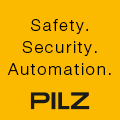
Posted to News on 9th Mar 2020, 16:04
Robot ROI: how to calculate the true cost of robotics
Google Trends data demonstrates that web searches for the phrase, "how much does a robot cost?" have doubled since 2009. Determining the total cost and return on investment (ROI) of a robot isn't straightforward, as Nigel Smith, managing director of industrial robot supplier TM Robotics, explains.
When you factor in the robot's engineering and maintenance costs, budgeting isn't always as easy as requesting a quote. As well as installation costs, factories may need to build segregated work areas or additional backup power units before a robot can be deployed. That's not to mention peripheral technology, such as sensors, variable robot grippers and any necessary mounting apparatus.
A report by the Boston Consulting Group suggested that, in order to arrive at a solid cost estimate for robots, customers should multiply the machine's price tag by a minimum of three. Let's say a six-axis robot costs 65,000, customers should therefore budget 195,000 for the investment. That said, should the robot require a more extensive equipment overhaul, a multiplication of four or five times the cost of the robot may be required.
Then, of course, there are variable costs to contemplate. These include the labour, energy, materials, ongoing maintenance and production supplies required to deploy a robot successfully. Due to the varying nature of manufacturing facilities, these costs can fluctuate dramatically depending on the industry sector and size of the operation.
Manufacturers can only calculate the ROI of an investment after establishing the robot's total purchasing cost. Even then, manufacturers must consider several other elements, starting with robot use.
Consider the following example. A food manufacturer plans to use two SCARA robots to automate pick-and-place processes. The robots will run for three shifts a day, six days a week, 48 weeks of the year. The equivalent labour usually requires two operators per shift, equating to six operators to complete the same throughput over a working week.
Using the average salary of a UK production operative as an example, at 25,000 per annum, removing these roles would reduce labour costs by 150,000 a year. However, human labour is not eliminated. A good rule-of-thumb for labour estimations alongside a robotic system is 25 per cent of current costs, reducing the total labour budget to an impressive 37,500 per year. Minus this figure from the total robot purchasing cost we determined earlier, and manufacturers have an estimated ROI for the first year.
That said, there are some flaws in this method of ROI calculation. Many of these figures are estimates. For a true reflection of ROI, manufacturers should conduct a thorough cost analysis based on the operations of their facility, as well as a risk assessment.
But what about the complementary benefits of robots that aren't considered in this calculation? Robots offer peace-of-mind for delivering productivity gains to improve a factory's bottom line. For instance, eliminating the likelihood of human error in manufacturing processes can reduce scrap material, minimise reworks and improve the consistency of products.
According to the Annual Manufacturing Report 2019, over three-quarters of manufacturers are ready to invest in new technologies to boost productivity. No doubt, robots will be among these investments. However, as manufacturers consider investing in robotic technology for productivity, it's vital they have clarity for ROI validating purchasing decisions.
For further guidance on calculating robot ROI, or for help deciding on the correct robot for your application, speak to the experts at TM Robotics; see www.tmrobotics.com.
Want the latest machine building news straight to your inbox? Become a MachineBuilding member for free today >>
Unit 2, Bridge Gate Centre
Martinfield
AL7 1JG
UNITED KINGDOM
+44 (0)1707 290370


















